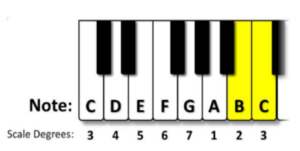The US Court of Appeals for the Ninth Circuit again vacated the US District Court for the Central District of California’s dismissal of a case for lack of personal jurisdiction, applying Fed. R. Civ. Proc. 4(k)(2) and concluding that the copyright infringement claims involving a foreign defendant were properly litigated in the United States. Lang Van, Inc. v. VNG Corporation, Case No. 19-56452 (9th Cir. Jul. 21, 2022) (Bybee, Bennett, JJ.; Bataillon, Distr. J., sitting by designation).
Lang Van, Inc. (LVI) is a California corporation that produces and distributes Vietnamese music and entertainment and owns copyrights to more than 12,600 songs and original programs. LVI sued VNG Corporation, a Vietnamese company that makes copyrighted music available for download worldwide through its Zing MP3 website and mobile applications. LVI served discovery requests on VNG, but instead of supplying substantive information or documents, VNG moved to dismiss for lack of personal jurisdiction. The district court granted the motion, and LVI appealed to the Ninth Circuit, which vacated and remanded the case to the district court with instructions that LVI be permitted to undertake jurisdictional discovery.
On remand, LVI took third-party discovery and argued that the evidence showed that VNG intentionally chose to release its applications in the United States; consented to jurisdiction, choice of law and venue in California; and allowed hundreds of thousands of iOS downloads and tens of thousands of Android downloads.
VNG filed a renewed motion to dismiss LVI’s (now amended) complaint, arguing a lack of personal jurisdiction, forum non conveniens (that there is another, more appropriate, forum) and failure to state a claim. The district court granted VNG’s motion after finding that there was no specific personal jurisdiction over VNG in California under the Ninth Circuit’s specific personal jurisdiction test. The district court did not address the second and third arguments (forum non conveniens and failure to state a claim) and did not address the issue of long-arm jurisdiction over VNG under Rule 4(k)(2). Again, LVI appealed.
The Ninth Circuit assessed jurisdiction under Rule 4(k)(2), which provides for jurisdiction over foreign defendants that have ample contacts within the United States as a whole, but whose contacts are so scattered among states that no single state would have jurisdiction. The test requires proof that (1) the claim at issue arises from federal law and (2) the defendant is not subject to any state’s courts of general jurisdiction, such that (3) invoking jurisdiction upholds due process, with the burden shifting to the defendant to show that application of jurisdiction under the third prong would be unreasonable.
The Ninth Circuit found that the first prong was met because the case involved claims of copyright infringement under federal law, and that the second prong was met because VNG asserted that it was not subject to the personal jurisdiction of any state court of general jurisdiction in the United States.
As for the third prong, the Ninth Circuit explained that when jurisdiction is challenged, the plaintiff must show (1) purposeful activities or transactions [...]
Continue Reading
read more

 Subscribe
Subscribe



